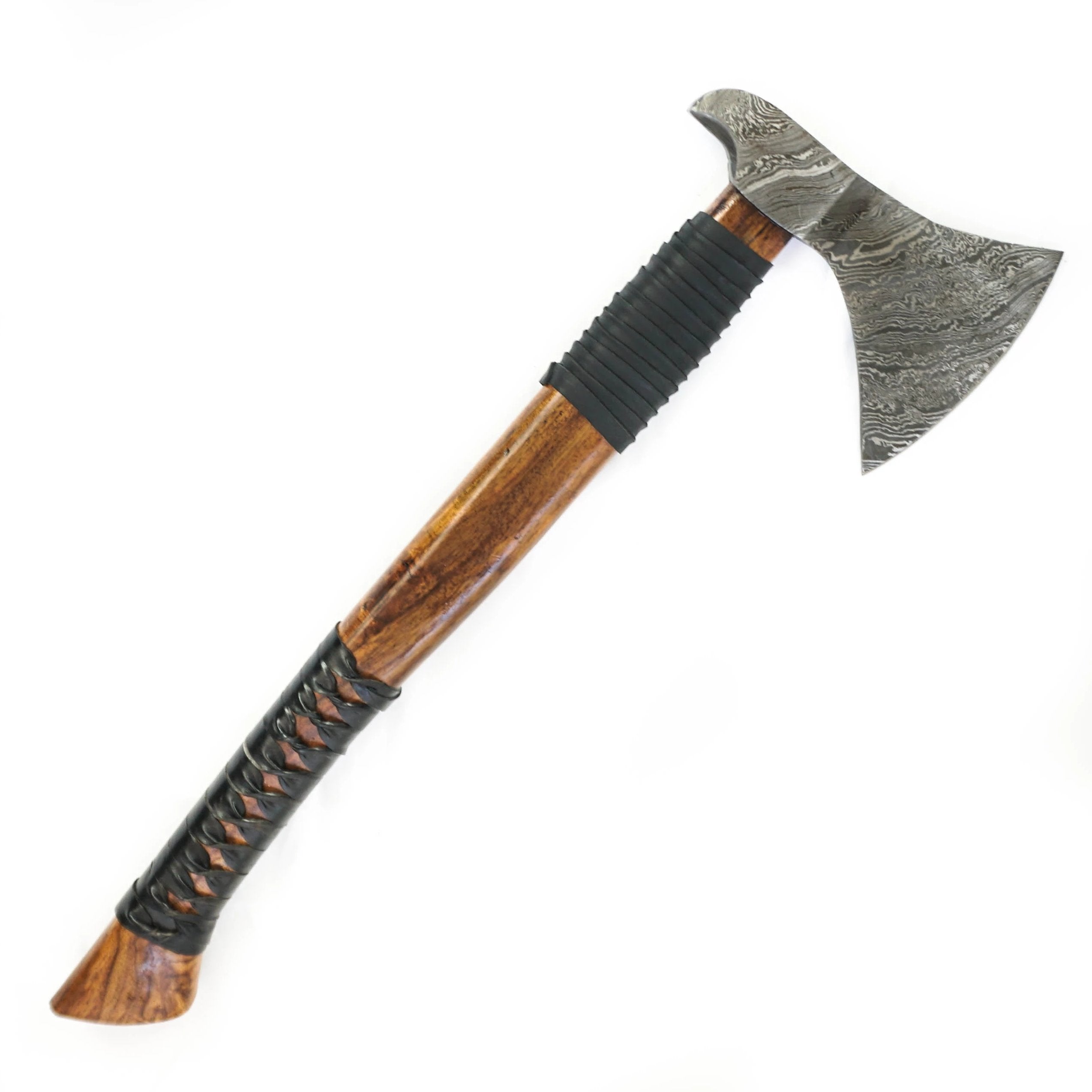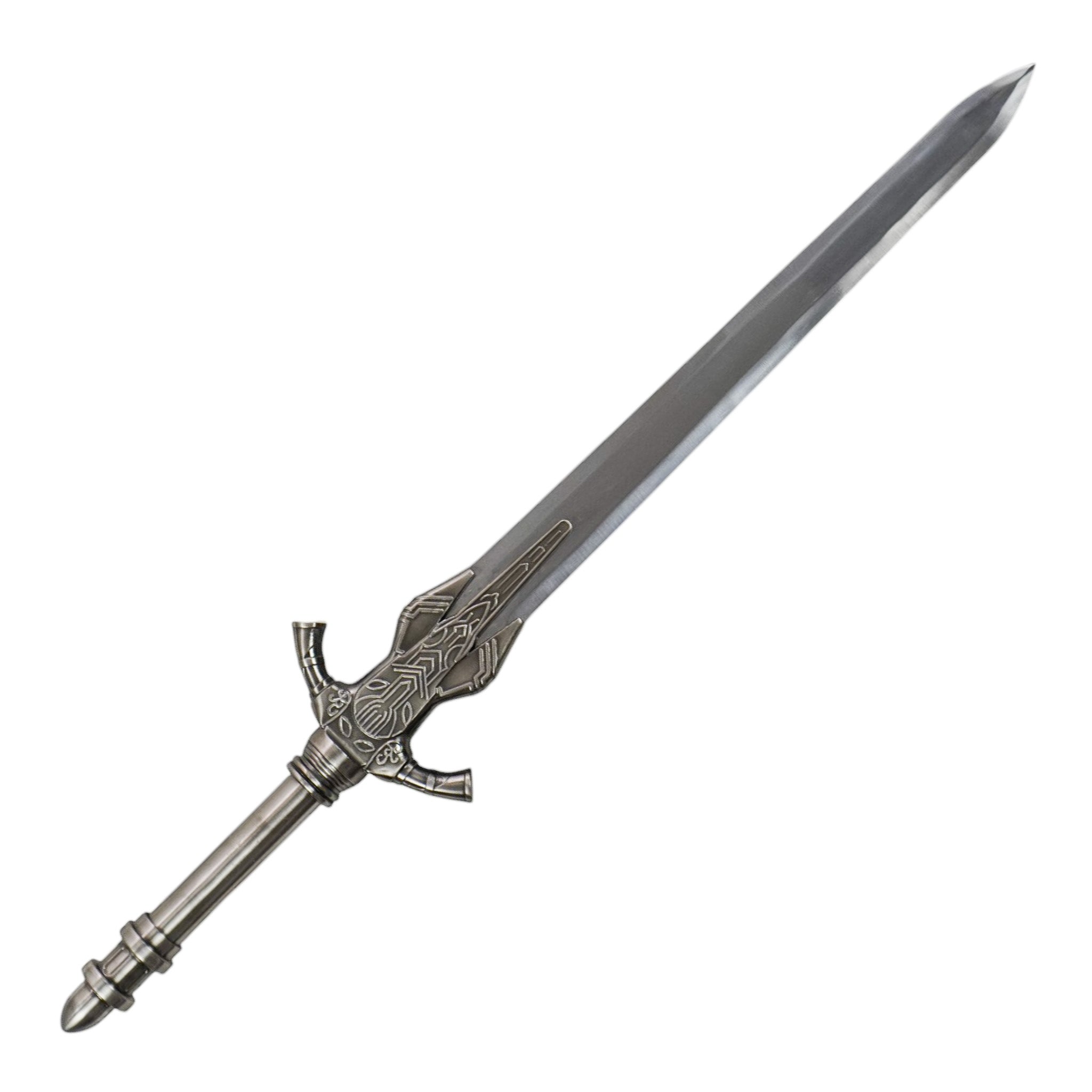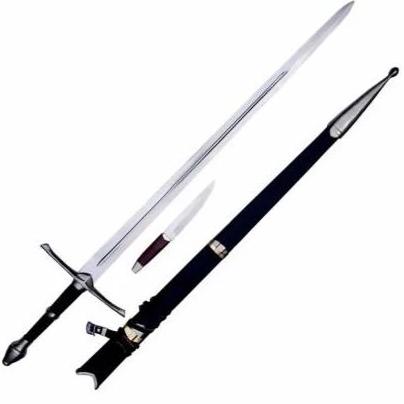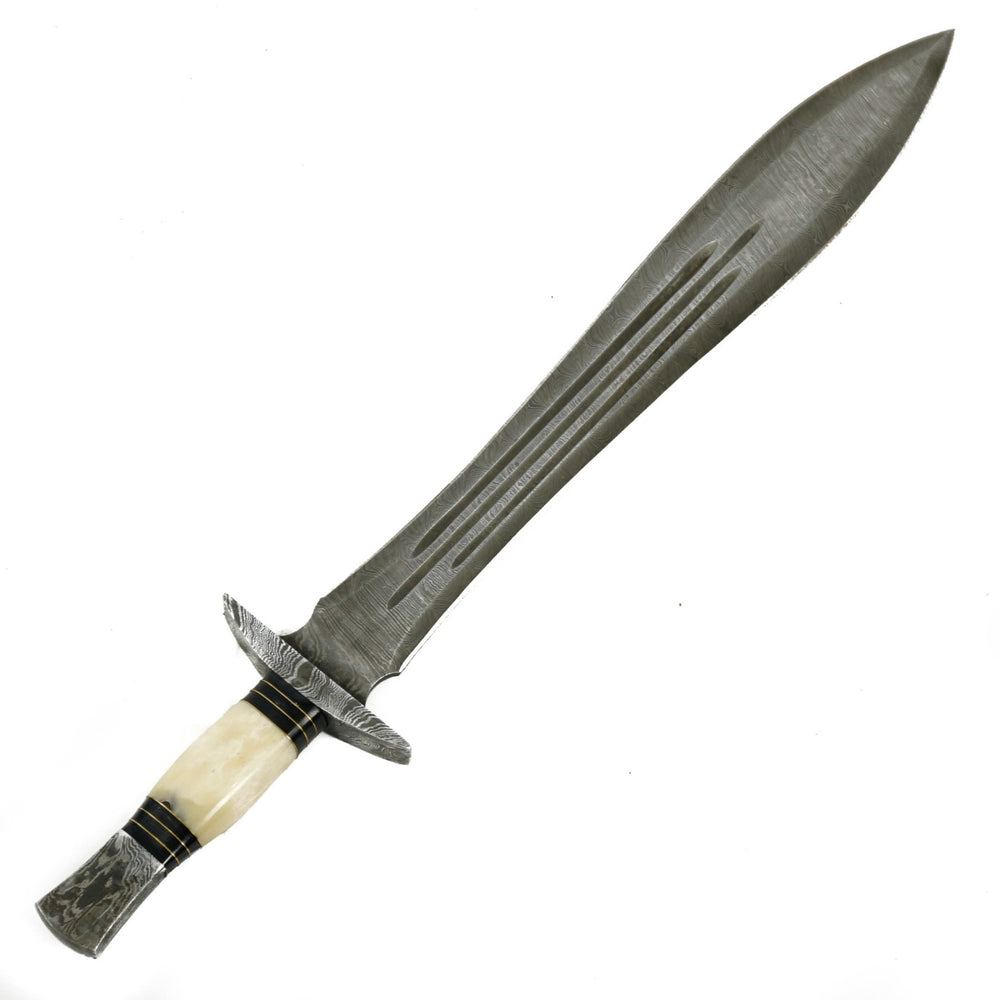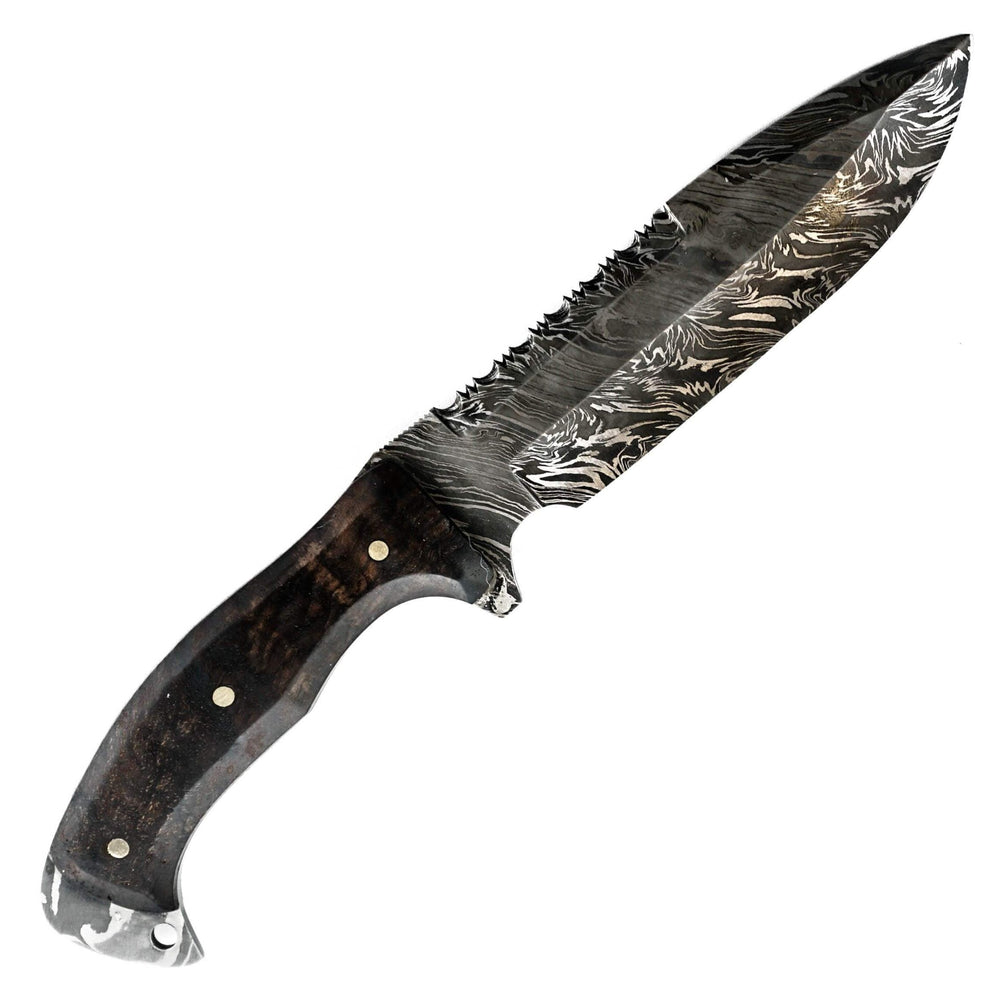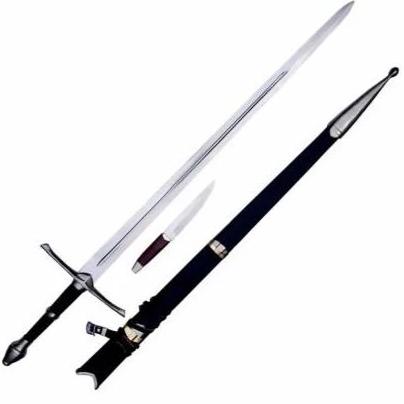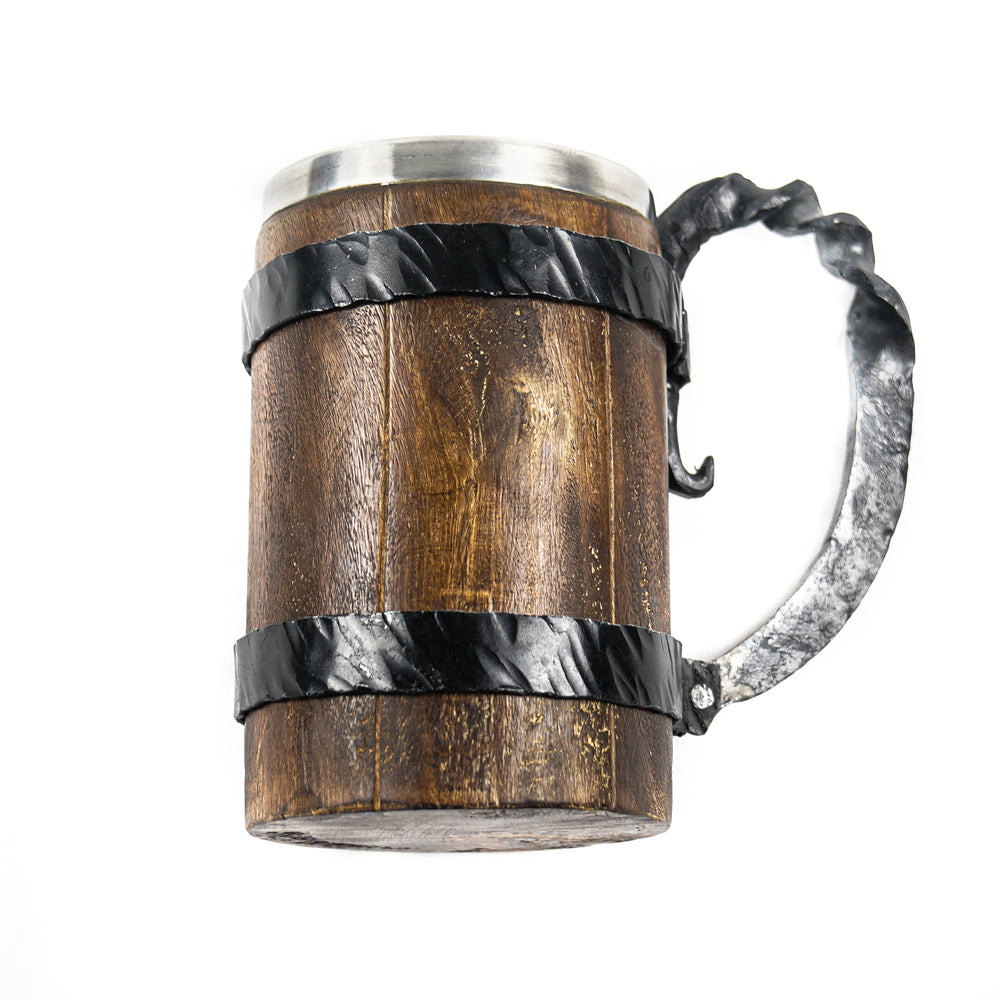The Chinese Halberd- A Weapon Of War And Art
The Chinese Halberd has a rich history dating back to ancient times and has played a significant role in Chinese warfare and culture. This weapon, consisting of a long metal head mounted on a wooden shaft, was used in battle and for ceremonial purposes.
The exact date of its creation is unknown, but it is believed to have been used as early as the Shang Dynasty 3500 B.C. Over the centuries, the design and construction of the halberd evolved, showcasing the ingenuity of ancient Chinese weapon crafting.
Today, the ancient Chinese Halberd symbolizes China's martial arts traditions and cultural heritage.
History Of The Chinese Halberd
The Chinese Halberd, also known as the Chinese halberd ji in Mandarin, is an ancient weapon with a rich Chinese cultural history. This weapon's creation date remains unknown.

However, this polearm gained popularity during the Qin and Han Dynasties (221 BC - 220 AD), serving both military and ceremonial purposes. High-ranking officials such as generals and princes would carry the Halberd as a symbol of authority and power.
The Chinese Halberd Medieval weapon typically consists of a wooden shaft with a metal head with a blade, spike, and hook. Halberd Ji was used for various battle tactics, including piercing, slashing, and disarming an opponent's weapon.
Despite the evolution of warfare in China, it remained an important and respected weapon throughout many centuries of Chinese history.
Check out the Qin and Han dynasties 3 piece bundle here.
Importance Of The Weapon In Chinese Culture And History
The Chinese Halberd played an essential role in Chinese Culture and history. It was a weapon and a symbol of authority and power.
The Halberd was often associated with high-ranking officials, such as military commanders and princes. It was regarded as a badge of honor to mark important events, i.e., coronations or military victories.
In addition to its ceremonial uses, the Chinese Halberd held great significance in battle. Its unique design allowed for flexibility in its Usage, effectively disarming opponents. While it offers protection to its wielder.
Furthermore, the Chinese Halberd represented the ingenuity and skills of ancient Chinese weaponsmiths. Its creation required a great deal of craftsmanship and hours of labor. These efforts helped develop artisans' skills, contributing to the evolution of Chinese art and technology.
Today, the Chinese Halberd remains an important symbol of China's rich heritage and traditions. It stands as a testament to the ancient skills of Chinese weapons manufacturers. Their contributions helped progress Chinese culture and history.
Design And Construction Of The Chinese Halberd
The Chinese Halberd, or Ji, is a long polearm weapon predominantly used in China during ancient times. The weapon originated in the Shang Dynasty and reached full prominence during the Qin and Han Dynasties. The weapon's construction and design evolved, catering to various functional and ceremonial purposes.
Materials Used For The Metal Head And Wooden Shaft
The metal head of the Chinese Halberd was usually made from iron or bronze. These materials were chosen due to their durability, strength, and ease of maintenance. The wooden shaft, on the other hand, was primarily made from the wood of the elm tree.
Elmwood is known to be exceptionally tough and highly resistant to bending or breaking. Making it the ideal material for use in the weapon's construction. The handle of the Halberd was often made from a bull's horns or bamboo.
Various Shapes And Sizes Of The Metal Head
The shape of the metal head of the Chinese Halberd varied significantly, depending on the weapon's intended use. Some halberds had a triangular-shaped head with a pronounced pointed end.
While others had a crescent-shaped head with a curved, blade-like protrusion. The weapon's size also varied, with some halberds measuring up to 3 meters long.
Length And Weight Of The Weapon
The standard length was around 2 to 3 meters, with some variations depending on the weapon's intended use. And its weight varied depending on the material and shape of the metal head.
But the average weight was around 3 to 5 kilograms. Despite its weight, the weapon was well-balanced, enabling the user to execute swift and accurate strikes against enemy combatants.

Military Usage Of The Chinese Halberd
The Chinese Halberd has been notably used in various historical battles and favored by military leaders in their conquests.
Let's explore the military Usage of the Halberd in China's history.
Tactical Advantages Of The Weapon In The Battle
The Chinese Halberd was an asset in battle due to its versatility. It served a dual purpose as a long-range weapon for cutting and thrusting and as a close-combat tool.
Overall, the long metal head provided a reach advantage and powerful force, making it an effective attacking and defending weapon.
The Halberd's extended reach and the sharp blade made it formidable against heavily armored foes, piercing through armor with ease. It also had a hook on the back of its head, useful for grappling and pulling enemies off horses.
This feature gave it a distinct advantage on the battlefield, making it a go-to weapon for Chinese soldiers. Its versatility in combat and formal settings cemented its place in Chinese culture and history.
Finally, the Chinese Halberd was also easier to produce and maintain than other weapons at the time. And making it a popular choice for infantry and cavalry.
Usage By Different Military Units And Ranks
Different military units and ranks widely used the Chinese Halberd. Infantry soldiers typically carried halberds, while cavalry units utilized halberds for charging and dismounting enemies.
It was also favored by high-ranking officials, who would carry ornate, gold-decorated halberds as symbols of power and authority.
The Song Dynasty (960-1279 AD) developed specialized units of halberd-wielding soldiers. These soldiers were called "Fire Lances." They used their halberds with explosive bamboo tubes to create a primitive flamethrower.
Notable Battles And Military Leaders Who Used The Halberd
The Chinese Halberd saw action in many famous battles throughout history. During the Battle of Jiangqiao in 1161, the Song Dynasty's halberd-wielding infantry forced the opposing Jin army to retreat.
In 1274, the Mongolian army was defeated by halberd-wielding soldiers during the Battle of Bun'ei. Several prominent military figures in Chinese history were known to utilize the Chinese Halberd.
Some notable examples include Guan Yu, a general during the Three Kingdoms period (220-280 AD). He was revered for his skill with the Halberd.
Another well-known figure was Yue Fei, a Song Dynasty general leading his troops into battle with his Halberd.
Ceremonial Usage Of The Chinese Halberd
Symbolism And Significance Of The Weapon In Ceremonies
The Chinese Halberd, also known as the Guan Dao, was more than just a weapon of war. It was symbolic in China's ancient Culture and was used extensively in various ceremonies.
The gun was associated with power and authority, making it an ideal tool for ceremonial use by the ruling elite. The Halberd was also thought to bring good luck and ward off evil spirits.

Usage By High-Ranking Officials And Aristocracy
High-ranking officials and aristocrats often carried the Chinese Halberd during ceremonies. The weapon was used as a symbol of authority and power, reflecting the importance and status of the bearer. It was also a sign of military might, as most officials who carried halberds were generals or military leaders.
Examples Of Ceremonies Where The Halberd Was Used
The Chinese Halberd was used extensively in ceremonial events such as coronations, weddings, and funerals. At a coronation ceremony, for instance, the Halberd would be displayed prominently alongside other ceremonial objects. It represents the transfer of power and authority from the previous ruler to the new one.
The weapon was also used in weddings to describe the groom's status and wealth. Funerals were on another occasion when the Halberd symbolized the deceased's status and protection against evil spirits.
It was an important tool for ceremonial purposes, reflecting the significance of military power and authority in ancient Chinese Culture. Its Usage by high-ranking officials and aristocrats at various events indicated its symbolic meaning.
Impact Of The Halberd On Chinese History And Culture
The Chinese Halberd has significantly impacted Chinese history and Culture. The Halberd was often used in battles and was crucial in shaping ancient China's military tactics and strategies.
It was particularly effective against cavalry and played a vital role in defending cities and fortresses. Besides its combat function, the Halberd was also utilized as a status symbol by high-ranking officials and generals. It emerged as a significant cultural icon representing traditional Chinese values and beliefs.
The weapon's popularity even extended to literature, where it was depicted in various poems and stories in Chinese society.
Influence On The Design And Usage Of Similar Weapons In Other Cultures
The Chinese Halberd's design and Usage have also influenced the development of similar weapons in other cultures. For example, the Japanese Naginata is a polearm weapon directly affected by the Halberd.
Moreover, the Naginata even shares some physical features with the Chinese Halberd, such as a long, curved blade and a wooden shaft. Other cultures in Southeast Asia and India also developed versions of a polearm weapon similar to the Halberd.
The Chinese Halberd's effectiveness in battles and its symbolic value have influenced the design and Usage of such weapons in other cultures.
Grab the Halberd: A Versatile and Deadly Polearm in Medieval Warfare today!
Current Preservation Of The Weapon In Museums And Historical Sites

Despite the Chinese Halberd being an ancient weapon, it still exists in museums and historical sites worldwide. It is a treasured part of Chinese history and Culture. Collectors and museums have preserved many examples of the weapon, showcasing its design and craftsmanship.
Forbidden City in Beijing contains impressive examples of the Halberd, which visitors can view. The Shaanxi History Museum in Xi'an also houses numerous halberds from various Chinese dynasties. These halberds represent the evolution of the polearm and provide a glimpse into ancient Chinese battle practices and cultural accomplishments.
The Chinese Halberd's preservation in these historical sites ensures that its legacy in Chinese history will not be forgotten.
Learn more about the Types of Chinese Polearms and Their History.
Chinese Halberd In Modern Era - Available At Battling Blades
The Chinese Halberd, an ancient weapon with a rich cultural history, continues to be a popular item in the modern era. While its original purpose was for military and ceremonial use, the halberd can now be found in the hands of collectors. Also including martial artists, and even games.
Some companies offer replicas of the weapon as battling blades, allowing enthusiasts to wield a piece of Chinese history in modern times.
Battling Blades is offering Chinese Halberd for sale in their sales throughout the year.
To Wrap-Up
The Chinese Halberd is a versatile and iconic weapon that has played a crucial role in China's history. From its earliest uses in the Shang Dynasty to becoming a symbol of authority during the Qin and Han Dynasties.
This polearm has successfully served military and ceremonial purposes. With its long metal head mounted on a wooden shaft, the Chinese Halberd is a striking weapon with beauty and deadly force.
As an art form, the Chinese Halberd has inspired countless artworks throughout history with its intricate designs and elegant curves.
From a military standpoint, it has proven its worth in numerous battles, with soldiers wielding it with skill and determination.
Overall, the Chinese Halberd remains an important symbol of Chinese Culture and history, embodying artistry and martial power. If you want to learn more about this fascinating weapon, a deep dive into its history and design will be informative and enlightening.

